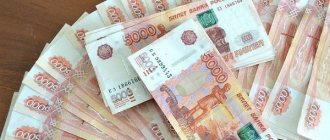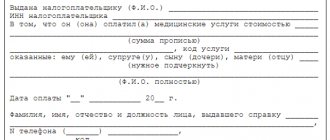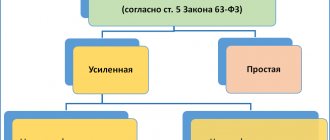The tax payment procedure is determined by how the peasant (farm) enterprise (peasant farm) carries out its work. Peasant farm representatives can register a farm, or they can do without it by simply concluding an agreement on the creation of a peasant farm. In this case, it is enough for the head of the peasant farm to register as an entrepreneur.
BASIC
Under the general taxation system, peasant farms pay:
- VAT;
- property tax (if there are taxable objects);
- land tax (if there are taxable objects and if in the area in which the peasant farm operates there are no benefits for this tax);
- transport tax (if there are taxable objects);
- Personal income tax (as a tax agent).
As for income tax, peasant farms are not exempt from it (Article 246 of the Tax Code of the Russian Federation). However, if certain conditions are met, they will not have to pay this tax. In particular, for agricultural producers who have not switched to the Unified Agricultural Tax, a reduced rate has been established - 0 percent. This rate can be applied to activities related to the sale of produced agricultural products, as well as the sale of produced and processed own agricultural products. Such rules are established in paragraph 1.3 of Article 284 of the Tax Code of the Russian Federation.
The procedure for paying personal income tax also has some features.
Thus, there is no need to pay personal income tax on income received by members of a peasant farm (including its head) from the production (processing) and sale of agricultural products for five years, counting from the year of registration of the peasant farm. Such a benefit can be applied to the income of a member of a peasant farm only if he is using it for the first time and has not used it before. The benefit is provided by default, that is, there is no need to write any statements (notifications) to the tax office.
After five years, from this income, as well as initially from other income of members of the peasant farm and hired employees, its head pays personal income tax as a tax agent in the general manner.
This conclusion follows from Articles 207 and 226, paragraph 14 of Article 217 of the Tax Code of the Russian Federation.
The remaining taxes (VAT, property tax, land and transport taxes) are paid by the peasant farm in the general manner.
This follows from Articles 143, 226, 373, 357, paragraph 2 of Article 387, paragraph 1 of Article 388 of the Tax Code of the Russian Federation.
What can a peasant farm do?
The subject of activity is agricultural products. The farm has the right to produce, process, store, transport and sell it at its own discretion. Peasant farm enterprises can engage in:
- livestock farming;
- agriculture;
- field farming;
- forestry, etc.
Collective farming has the right to use motor transport. It can transport cargo necessary for business activities. The law does not prohibit transporting: feed; fertilizers; seeds; raw materials; manufactured products; fuels and lubricants; equipment and spare parts; other goods needed for the household.
simplified tax system
If a peasant farm applies a simplified tax regime, then there are no specific features of its taxation under this regime. Therefore, calculate taxes in the general manner.
Situation: can a simplified peasant farm with the object “income” reduce the single tax by the entire amount of mandatory insurance contributions for the head and for all members of the peasant farm without a limit of 50 percent?
Answer: yes, it can, but only if the peasant farm does not use hired labor. Moreover, this applies to both peasant farms registered as an organization and those without registration of a legal entity.
Regardless of the form in which the peasant farm is registered - as an organization or without forming one, insurance premiums for compulsory pension (social, medical) insurance are always paid by the head of the peasant farm. And the law equates him to an individual entrepreneur.
The head of a peasant farm pays mandatory insurance premiums for himself and members of the farm in a fixed amount.
This procedure is established in paragraph 3 of Article 2 and paragraph 2 of Article 14 of the Law of July 24, 2009 No. 212-FZ.
Based on these provisions, the Ministry of Finance of Russia, in letter dated December 22, 2014 No. 03-11-06/2/66200, also for simplification purposes equated peasant farms to entrepreneurs. That is, a peasant farm without hired personnel can reduce the single tax by the entire amount of insurance premiums paid for the head of the peasant farm and its members (paragraph 3, subclause 3, clause 3.1 of Article 346.21 of the Tax Code of the Russian Federation). The 50 percent limit does not apply to them.
conclusions
I believe that collective farming is a very convenient form of organizing a small business for people who are accustomed to working on the land and living from their labor. After registering a peasant farm, you can count on financial assistance from the state. Preferential loans are available for the purchase of equipment, equipment, agricultural raw materials, etc. There is a special tax regime with a low rate and no paperwork.
In addition, you may be interested in how to register a private subsidiary plot and start earning money from scratch.
BASIC
If the head of a peasant farm applies the general taxation system, then he pays:
- personal income tax;
- VAT;
- land tax, if in the area in which the peasant farm operates there are no benefits for this tax;
- transport tax.
The procedure for paying personal income tax has some features.
Personal income tax on the income of peasant farm members
There is no need to pay personal income tax on income received by members of peasant farms from the production (processing) and sale of agricultural products for five years, counting from the year of registration of the peasant farm. Such a benefit can be applied to the income of a member of a peasant farm only if he is using it for the first time and has not used it before. The benefit is provided by default, that is, there is no need to write any statements (notifications) to the tax office.
After five years, from this income, as well as initially from other income of members of the peasant farm, its head pays personal income tax as a tax agent in the general manner.
This conclusion follows from Articles 207 and 226, paragraph 14 of Article 217 of the Tax Code of the Russian Federation.
Personal income tax on the income of the head of a peasant farm as an entrepreneur
Since the head of the peasant farm is a member of the peasant farm, he can also use the personal income tax benefit. That is, do not pay this tax on income from production (processing) and sale of agricultural products for five years, counting from the year of registration of the peasant farm. This is possible provided that he is using such a benefit for the first time.
After five years, the head of the peasant farm pays personal income tax on such income in the general manner, like any other entrepreneur.
On income that is not income from production (processing) and sale of agricultural products, the head of the peasant farm also pays personal income tax on a general basis. There are exceptions to this.
Do not include in the personal income tax base:
- budget subsidies;
- budget grants received for the creation and development of peasant farms, home improvement for a beginning farmer, and the development of a family livestock farm.
This follows from Article 207, paragraphs 14, 14.1, 14.2 of Article 217 of the Tax Code of the Russian Federation.
Personal income tax on the income of hired employees of peasant farms
The head of a peasant farm, as an entrepreneur, can attract hired employees under employment contracts. From their income, he pays personal income tax in the general manner as a tax agent (Articles 207 and 226 of the Tax Code of the Russian Federation).
How to get subsidies
The state implements various programs to develop agricultural business. Measures aimed at supporting farmers are being taken at both the federal and regional levels. After opening a peasant farm, you can apply for assistance from the state.
In the regions, competitions are often held to distribute financial resources among farms. Those wishing to participate in them submit applications to the competition commissions in advance. The rules generally provide for the subsequent filing of reports on the expenditure of government assets.
In order to improve solvency in the agricultural sector, the state provides subsidies to repay obligations on investment loans. The selection of winners is also carried out on a competitive basis after consideration of submitted applications.
The implementation of projects to provide financial support to farmers is entrusted to relevant government agencies. Limit levels, types of assistance and rules for participation in programs change annually. You can keep up with the latest information on the websites of government agencies working with business in the field of agriculture.
Book of income and expenses under the Unified Agricultural Tax
In accordance with sub. 5 p. 1 art. 23 of the Tax Code of the Russian Federation, as well as clause 8 of Art. 346.5 entrepreneurs on the Unified Agricultural Tax must submit to the Federal Tax Service, at the request of the department, a book of income and expenses. It is usually requested during a desk tax audit. The book must be kept in the form approved in Appendix No. 1 to Order of the Ministry of Finance of the Russian Federation dated December 11, 2006 No. 169n.
A state support program is provided for agricultural producers. Find out whether to include targeted funds in income if you receive a subsidy at a consultation with a ConsultantPlus expert. To do this, register and get trial access for free.
Section 1. Agricultural crops
Column 4. Cultivated area - hectares
This form is drawn up taking into account the economic use of agricultural crops (for grain, green fodder, hay, etc.), i.e. if the area sown with a particular crop was not used for its original purpose, in column 4
this area is reflected according to actual use. So, if certain areas of crops (from among those that did not die) in the spring were intended for grain, but were actually harvested and used for feed purposes, then they are shown in the group of forage crops for annual grasses or silage crops, with an explanation of the reasons for such transfer from grain crops. At the same time, crops of grain crops that partially died in the summer and were not replanted (including those used for grazing, hay, green fodder and silage) are not excluded from the number of grain and leguminous crops and, therefore, are not transferred to the number of forage crops .
The blank lines of the form show grains, legumes, industrial, vegetable and feed crops by type that were grown on the farm in the current year. The empty lines after winter wheat are intended to record winter grain crops.
Column 6. Actual harvest from the entire area - centners - in the originally capitalized weight
In column 6
the actual harvest is shown in the initially capitalized weight - the entire quantity of products of the corresponding type, the harvest of which by the reporting date is fully accounted for and capitalized in physical weight, as well as products collected, but not weighed and not capitalized.
Column 7. Actual harvest from the entire area - centners - in weight after processing
In column 7
for grains and leguminous crops, oilseeds (sunflower, soybeans, rapeseed, etc.), the entire amount of grain and seeds of these crops in weight after processing is shown (i.e., minus unused waste and shrinkage during processing on the farm).
Line 1302. Open ground vegetables
Collection of cobs of sweet corn of milky and milky-waxy ripeness for canning, fresh use for food is shown in the vegetables line
(based on the physical weight of the cobs - no discounts).
Line 1320. Melons and food crops
On line 1320
food watermelons and melons are taken into account.
Line 1326. Mushrooms
On line 1326
the harvested area and the collection of mushrooms (champignons, oyster mushrooms) grown in greenhouses, basements and other adapted premises are shown.
Line 1614. For reference: Area of clean fallows in 20__ (including green manure and rock fallows, as well as black fallows), ha
On line 1614
(for reference) only the areas of clean fallows intended for sowing winter crops in the fall of the current year are given, as well as for sowing spring crops next year. This line does not include areas plowed on fallow lands newly developed this year, as well as fallow plowing.
Logical and arithmetic controls
1. The sum of data on the types of crops included in the corresponding group (cereals and leguminous crops, industrial crops, open-ground vegetables, forage crops) must be equal to the total for the group of crops (lines 1140, 1238, 1302, 1434).
2. page 1434 gr. 4 ≥ (page 1401 + page 1406 + page 1409 + page 1411 + page 1417 + page 1421) gr. 4 3. page 1440 = page 1140 + page 1238 + page 1301 + page 1302 + page 1320 + page 1434 4. page 1412 gr. 5 ≤ page 1411 gr. 4 5. page 1413 gr. 5 ≤ page 1411 gr. 4 6. page 1418 gr. 5 ≤ page 1417 gr. 4 7. page 1419 gr. 5 ≤ page 1417 gr. 4 8. page 1422 gr. 5 ≤ page 1421 gr. 4 9. page 1423 gr. 5 ≤ page 1421 gr. 4
These forms will only be used to obtain summary results.
Section 2. Production of crop products in greenhouses
Section 2 shows the used area of greenhouses, greenhouses, insulated soil and crops under film for the current year's harvest only for the first turn.
In lines 1702 - 1706
data on the production of greenhouse vegetables is reflected (in centners), in
line 1711
- data on other crop products: seedlings of vegetable and berry crops, flower seedlings (except those produced for domestic consumption), cut flowers (all types), etc. (in thousand pieces with 1 - 2 decimal places).
Logical and arithmetic controls
page 1702 ≥ page 1705 + page 1706
These forms will only be used to obtain summary results.
Sample filling
Download a sample of filling out the RSV for peasant farms.
Source:
"Clerk"
Heading:
peasant farm
DAM Peasant Farm Head of Peasant Farm Instructions for an Accountant
- Inna Kosnova, Clerk columnist, accounting and taxation expert
Sign up 9880
12350 ₽
–20%
Can PSN and UTII also be used?
The unified tax on imputed income and the patent system of non-profit organizations belong to special regimes, but have not yet been applied in the field of peasant farming as the main ones due to a number of legislative reasons and nuances of application. At the same time, farmers could provide services not directly related to agriculture, but subject to PSN and UTII. Then the use of these systems was fully justified as additional ones.
The use of UTII from January 1, 2021 is no longer provided for by law (FZ-97 dated June 29, 2012, Art. 5). The patent system, on the contrary, has expanded its scope and can now be used by farmers. Federal Law No. 8 dated 6/02/20 was signed, introducing appropriate amendments to Articles 346.43 and 346.45 of the Tax Code of the Russian Federation. It will begin to apply from the 1st day of the next tax period, i.e. actually from January 1, 2021. The cost of a patent is calculated based on the potential income per year and a rate of 6%.
Responsibility for violation
The head of the farm is responsible for submitting reports and paying tax payments and contributions. Therefore, he is personally responsible for ensuring that all legal regulations are complied with in a timely manner. If the farm does not have time to submit a report or pay taxes, then penalties will be applied to it.
In particular, using the Unified Agricultural Tax and not submitting reports in a timely manner, you can expect penalties in the amount of 5 to 30% of the tax amount. Moreover, they are established for all months of delay, regardless of whether they are full or not. In this case, the amount of penalties cannot be less than one thousand rubles.
Basic moments
Many peasant farms do not abandon the general taxation system in order to retain customers for goods. This is explained by the fact that almost all buyers wholesale work on OSNO, and in order to reduce their own tax burden they need to purchase goods from farms (peasant farms, individual entrepreneurs) working with VAT. After all, only in this case can they compensate the VAT paid for goods from the state treasury and, as a result, additionally receive profit from the transaction.
There are no specific features of using “simplified” by an agricultural enterprise when compared with other organizational and legal forms. Everything is normal here. To use the simplified tax system of 6% or 15% (in some regions the rate is reduced), you need to submit an application to the tax authorities during state registration.
The use of unified agricultural tax looks especially interesting. Practice shows that Unified Agricultural Tax taxes are considered the most profitable way to tax the work of an agricultural enterprise. To use it, you also need to submit an application for transition to the Unified Agricultural Tax.
A peasant farm can use one of three forms of taxation:
- the general one is a tax system in which individual entrepreneurs pay taxes to the budget;
- simplified - in this case, a rate of 6% or 15% is applied, based on the type of tax base;
- unified agricultural tax - a rate of 6% is applied.
If the first two tax systems are best known to legal entities and businessmen, then the third is not chosen very often.
Features of taxation
The specifics of using the taxation system for peasant farms lie in specific points.
The group of paid tax payments entirely corresponds to the group of tax payments of individual entrepreneurs and does not relate in any way to the taxation of legal entities. They pay personal income tax (13%), VAT (10–18%), transport tax, land tax, insurance contributions to the relevant departments. For the first 5 years after state registration, peasant farms do not pay personal income tax.
A distinctive feature of paying insurance premiums is that the rates are differentiated for representatives of the enterprise and for hired employees. For representatives of peasant farms, there are fixed rates, which are calculated depending on the minimum wage and are relevant for an individual entrepreneur.






